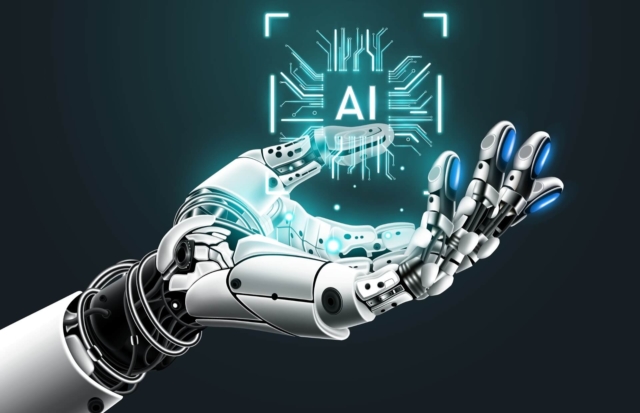Designing A Flexible Workforce Ecosystem To Adapt To Changing Business Needs

Nov 30, 2023
Last updated on Jul 18, 2024
In today's disruptive business landscape, effectively managing your workforce has never been more challenging. Rapid digital transformation and unpredictable shifts in the market are forcing companies to constantly adapt. An agile, flexible workforce ecosystem may hold the key to navigating uncertainty and harnessing changes as opportunities

The pace of change today is unprecedented across industries, driven by new technologies, innovations, and evolving customer expectations. For organizations to keep up and stay competitive, they need to build workforce agility and adaptability into their talent strategies. A holistic workforce ecosystem that incorporates a mix of worker types, continuous learning, competitive branding, staffing partnerships, and data-driven optimization creates the capacity for organizational dexterity and evolution.
Building a flexible workforce
In today’s fast-paced business environment, organizations need to be nimble and adaptable to keep up with changing demands. A key element of building workforce agility is having access to a flexible mix of worker types. Part-time workers, independent contractors, and temporary and gig workers can all provide the elasticity needed to scale workforce capacity up or down. Maintaining a bench or on-demand talent pool to quickly tap into specialized skills allows an organization to remain responsive to new initiatives or fluctuations in workflow.
Implementing agile processes, cross-training employees, and providing the right technology tools and infrastructure are also critical for empowering distributed teams and remote workers. With the rise of hybrid and remote work models, organizations need to ensure employees have what they need to collaborate and be productive regardless of location. Supporting work-life balance through flexible work policies helps attract and retain top talent in a competitive market. A holistic approach to building workforce flexibility across all these dimensions positions an organization to swiftly adapt as business needs evolve.

Fostering workforce adaptability
A flexible workforce ecosystem also requires a culture and environment that fosters adaptability and continuous learning. With rapid technology advancements and new innovations disrupting industries, it’s crucial to encourage employees at all levels to develop future-ready skills. Some ways to cultivate an adaptable workforce include providing resources and time for ongoing education, cross-training, and skills development. Enable remote and hybrid work arrangements to access specialized talent across geographic regions. Hire contingent workers with niche expertise to fill skills gaps on demand. Conduct regular skills gap analysis and implement upskilling programs to keep workforce capabilities aligned with organizational goals.
Fostering an adaptable workforce empowers employees to embrace change and new challenges. Facilitating continuous learning and providing opportunities for workers to expand their skills makes them more agile as individual contributors and elevates collective organizational capability. An adaptable workforce is key to remaining competitive and driving innovation.
Attracting and retaining top talent
Beyond building a flexible, agile workforce, organizations also need to focus on attracting and retaining high-caliber talent. With skills shortages in many areas and an increasingly competitive labor market, having an appealing employer brand and employee value proposition is more critical than ever. Compelling compensation and benefits packages, advancement opportunities, work culture, and purpose are all factors that can influence top candidates to join and stay with a company.
Promoting diversity, equity, and inclusion are also important elements in talent attraction and retention today. Employees want to feel valued, and respected and that they belong. Fostering a diverse workforce and inclusive culture allows an organization to benefit from fresh perspectives and new ideas. Committing to DEI in both policies and practices makes a company more attractive to modern talent.
Building an engaging employee experience focused on growth, development, well-being, and work-life balance enables an organization to retain and maximize the potential of its workforce. When top talent is engaged, motivated, and empowered, they become a powerful source of innovation, productivity, and agility.
Partnering with staffing firms
A strategic partnershipwith staffing and workforce solutions firms provides another valuable mechanism for designing and accessing a flexible workforce ecosystem. Relying on an ecosystem of staffing partners allows an organization to augment its workforce with pre-vetted, qualified contingent talent. This provides greater agility to scale up or down as demands fluctuate. Staffing partners often specialize in certain skill sets or industries, providing efficient access to niche expertise and talent pools on demand.
External staffing partners can effectively manage talent recruiting, screening, onboarding, and offboarding, alleviating the administrative burden for HR. This allows internal HR to focus more on workforce strategy, culture, and optimization. Staffing partners may also offer workforce acceleration and consulting services to help drive greater workforce productivity, capability, and engagement. The right staffing partners become an extension of your workforce ecosystem, providing the talent flexibility and support needed to optimize business performance.

Measuring and optimizing workforce ecosystem
To sustain workforce agility and effectiveness, organizations need to continually track, analyze, and optimize their workforce ecosystem design. Key metrics to monitor include talent utilization rates, bench strength, capacity vs. demand, and gaps in workforce capabilities. Workforce analytics provides data-driven insights to identify problem areas and improvement opportunities. For example, low contingent worker utilization may indicate the need for better workforce planning and demand forecasting processes. High turnover in critical roles may signal issues in engagement, compensation, or career development.
Continuous feedback through surveys, interviews, and performance data allows you to pinpoint friction points and areas for improvement. Regularly reviewing workforce metrics and stakeholder perspectives provides the foundation to keep refining policies, processes, and strategies to build an even more nimble, capable workforce. This fosters an agile, continuous improvement culture that allows the workforce ecosystem to scale and adapt optimally as the business landscape evolves.
The future of workforce management will be defined by automation, analytics, and artificial intelligence. The workforce is every organization’s most valuable asset in meeting business goals. Following leading practices across flexible workforce models, agile culture, competitive branding, staffing partnerships, and data-driven optimization allows HR to architect and sustain a workforce ecosystem strategically aligned to enterprise success, now and in the future. With a focus on building adaptability, organizations have an opportunity to turn business change into a competitive advantage.
Building workforce agility through flexible organizational designs, cross-functional teams, and expanded talent networks equips companies to swiftly mobilize the right human capital. With a robust ecosystem supporting varied working arrangements and learning systems, businesses can continuously realign their people strategy to fluctuate with the market. The keyword designing a flexible workforce ecosystem to adapt to changing business needs will be vital for organizations to execute their vision with agility.

Solve your HR problems!
8th floor, Afro-Asia Building, 63 Robinson Road, Singapore 068894



